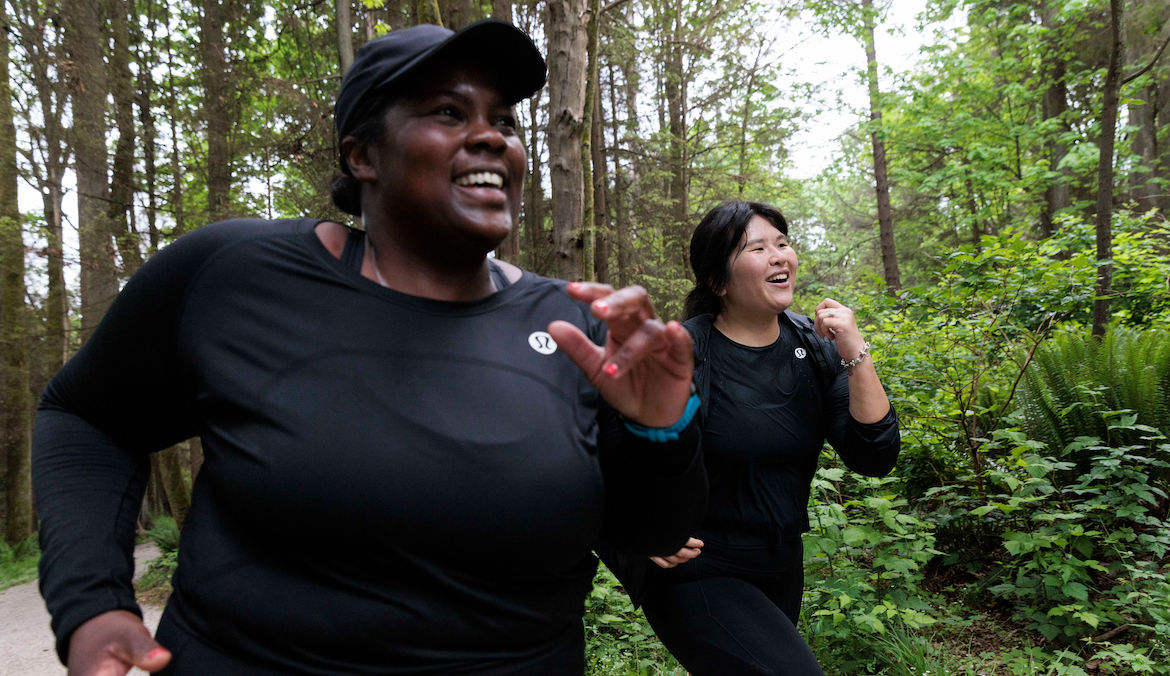She did not get the empowering finish she had hoped for. Valerio runs at what’s considered a slower place, between a 13- and a 17-minute mile. She was the last person to finish the race, which was fine with her—a finish is a finish! Except that the moment she stepped off the mat that marked the race’s end, she heard a loud ripping of tape—the sound of the finishing line mat getting pulled up.
- Mirna Valerio, Mirna Valerio is a runner, adventurer and advocate for inclusion in the running community towards people of all races, sizes, genders, and backgrounds.
“It totally destroyed the moment, having that sort of sacred moment interrupted by the sound of the mat being ripped up,” Valerio says. “They couldn’t have waited 10 more seconds?”
Valerio, unfortunately, has experienced this lack of what she calls “pace inclusivity” many times. Pace inclusivity means considering all running running, no matter how fast or slow. And it means designing and staffing races to accommodate all paces. So no insulting, moment-ruining finish line pull-ups, no breaking down of water stations and trail markers before everyone has passed them, no abandoning runners to find their own way to the finish line.
Valerio says many races even call themselves “pace inclusive,” but still engage in these demoralizing practices. In pre-GPS days, Valerio sometimes had to meander through the woods, looking for the correct path, since signposts were removed and race worker guides pulled from their stations and sent back to base camp.
“They don’t think that something slower than a 10-minute or an 11-minute mile counts as running, so they’ll leave you,” Valerio says. “I’ve been left behind so many times.”
Promoting inclusivity in running is one of the reasons Valerio has signed up for one of her most ambitious races ever: the lululemon FURTHER initiative. On March 8, the 2024 International Women’s Day, Valerio and nine other women will begin a six-day ultramarathon. There is no set distance, but the aim is to run as far as possible over the course of those six days.
Other FURTHER participants include world record holder Camille Herron, surgeon-turned-professional ultrarunner Stefanie Flippin, Women of Distance podcast host Devon Yanko, Brazilian Jiu Jitsu competitor Vriko Kwok (a running novice), among various runners from around the globe.
Photo: lululemon
The FURTHER initiative also includes a research component, in which lululemon and the Canadian Sports Institute Pacific will study the participants, with the aim of publishing research on how female bodies perform in endurance sports—part of a larger effort to close the research gap in women’s sports performance science.
“I have my personal goal of how many miles I wanna do, [although] that might change over the course of the next nine months,” Valerio says. “But I also just really want to be a beacon for those people that need to see me. And even for those people that don’t ever want to see me running, I need to be a beacon for them too.”
“I also just really want to be a beacon for those people that need to see me. And even for those people that don’t ever want to see me running, I need to be a beacon for them too.” —Mirna Valerio
Valerio is larger bodied, Black, and a mother in her mid-40s. She says that she might not be what people picture when they think “runner,” but she wants to demonstrate that she is what a runner looks like, too. Lululemon is helping to bolster this image by working with Valerio to design a running kit for the race that serves Valerio’s specific needs. They asked her what she needed, and how they could build something better, then designed apparel that actually fit. “I’m not pulling it up. I’m not pushing it down,” she says.
This wasn’t always the case. “I just think about how often in the past I had to wear men’s clothes that didn’t fit appropriately,” Valerio says. “We weren’t seen as serious athletes, so no one was making serious athletic clothing for us in our serious pursuits. But now, it’s been phenomenal working with lululemon. I get to be part of the fit process, the ideation process.”
Valerio faces her share of criticism for not conforming to typical racing standards, whether that’s comments on her body or her pace. But the way running nourishes her body and soul is what keeps her moving. And she hopes she can help others—who might face internal criticism or self-doubt—tap into their inner runner, too.
“It’s really hard to counteract those images and thoughts because that’s all we’ve been showered with,” Valerio says. “We see a very particular image, or an aspirational image, let’s call it, of who runners are, or what pace a runner should run. But we all know that that is just some sort of aspirational ideal that has nothing to do with us. Be your own aspirational ideal.”
